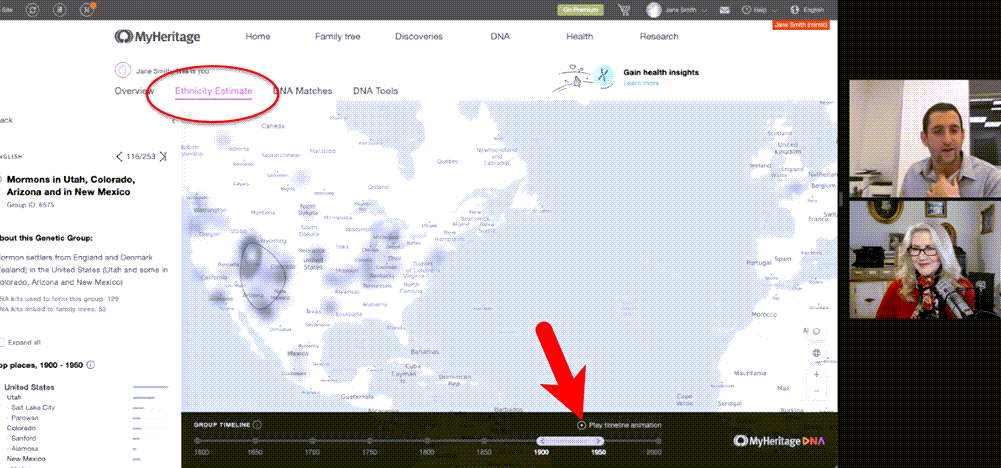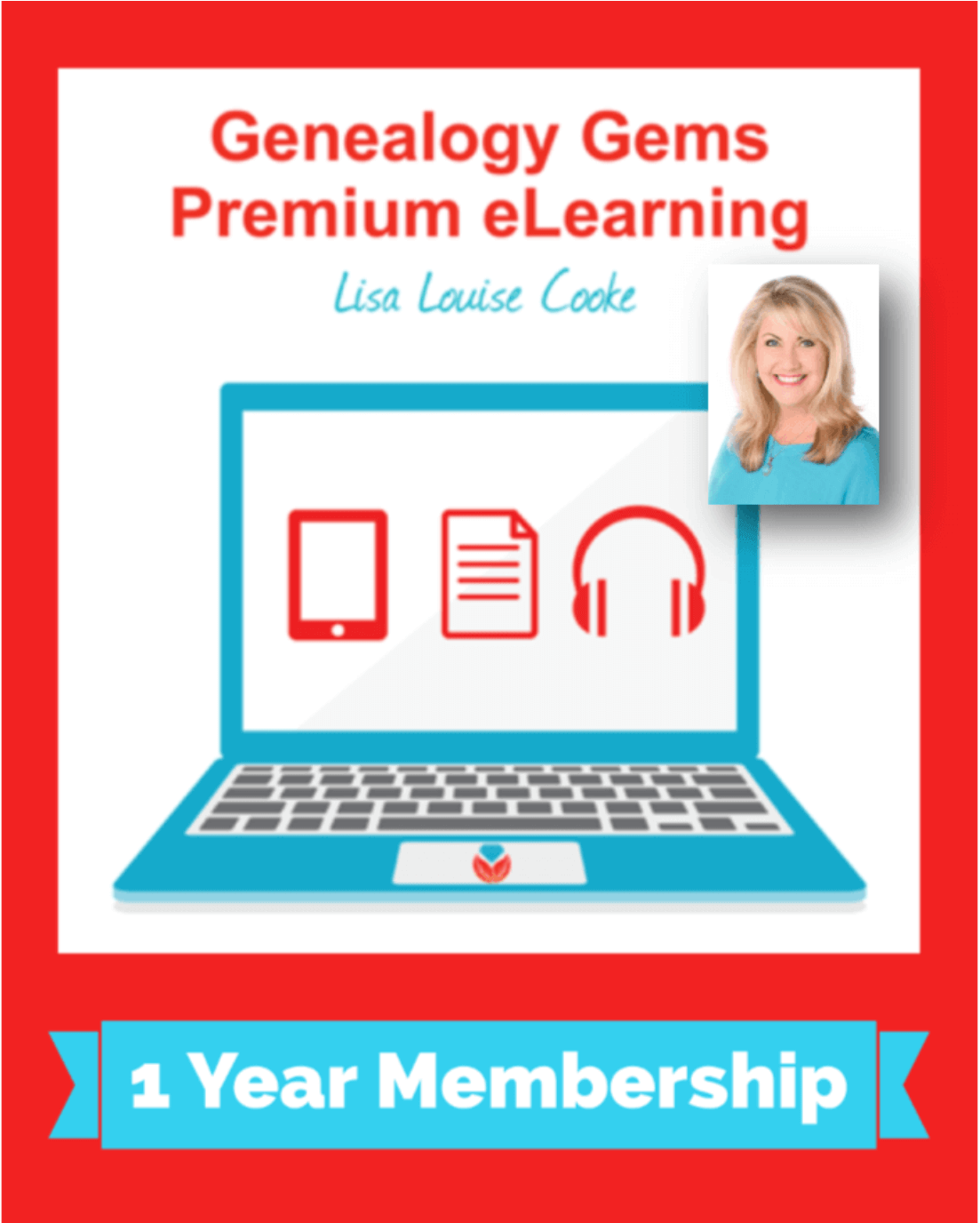Elevenses with Lisa Episode 42 Show Notes
Welcome to Elevenses with Lisa, our weekly little slice of heaven where friends get together for tea and talk about the thing that never fails to put a smile on our face: Genealogy!
My special guest in this episode is Ran Snir, Director of Product Management for DNA at MyHeritage. If you listen to my Genealogy Gems Podcast then you’ve heard him on that show, and Premium Members can enjoy his terrific Premium Video called How to get the most from your MyHeritage DNA test results.
Today we’ll be expanding on that topic and talking specifically about Genetic Groups. Ran covers:
- What MyHeritage had regarding Ethnicity Estimates up until this release
- how they built Genetic Groups
- the User Interface to show some cool examples of Genetic Groups in action
About MyHeritage Genetic Groups
Genetic Groups is MyHeritage’s long-awaited DNA feature that they describe as “accurately identifies ancestral origins with an incredibly high resolution of 2100+ geographic regions, more than any other DNA test on the market.
Genetic Groups provide greater granularity than standard ethnicity breakdowns by segmenting larger ethnic groups into smaller ones that share a common historical background. For example, beyond learning that they have Scandinavian origins, a user can now find out that they are Danish, and they may now learn where exactly in Denmark their ancestors came from.”
Here’s the announcement about Genetic Groups from MyHeritage:
The outstanding resolution of Genetic Groups and the innovative technology that powers this feature mean that MyHeritage is now able to identify many populations that have never before been detected by any consumer DNA test.
Examples of the Power of Genetic Groups
For example, descendants of the ancient Jewish communities of Aleppo in Syria, or Tripoli in Libya, can now trace their origins among 55 different Jewish groups supported by MyHeritage.
Another population with fascinating history is the Volga Germans — this group is composed of descendants of German settlers who migrated to the Volga River region of Russia and whose descendants later moved to Ellis County in Kansas and other locations. MyHeritage can identify 9 distinct Genetic Groups of Volga Germans.
More examples of groups that are unique to MyHeritage include Norwegians from Kvam and Bergen and their descendants in Minnesota, Italians from Potenza and Basilicata and their descendants in the United States, and hundreds more.

Ran Snir of MyHeritage demonstrates the Timeline Player.
Genetic Groups include detailed genealogical insights about each group. Users can view a group’s migration patterns and drill down to view its precise whereabouts during different time periods from the 17th century until today. For each Genetic Group, users can view common ancestral surnames and common given names, the most prevalent ethnicities among the group’s members, a list of other groups that have high affinity to the current one, and more.
This special animation we prepared for a specific Genetic Group of Mormons tells the story of Mormon settlement in the USA over 400 years, providing enlightening information about the group’s migration history.
How to Get Access to Genetic Groups
Genetic Groups are available for free to anyone who has already taken a MyHeritage DNA test, as an enhancement to the ethnicity estimate.
Users who have previously uploaded DNA results to MyHeritage from another service and have access to advanced DNA features (including those who uploaded before December 16, 2018 and have been grandfathered in), or who have an active subscription, will likewise be able to access Genetic Groups at no added cost.
Users who have uploaded DNA results from another service and do not currently have access to advanced DNA features may pay a one-time unlock fee of $29 per kit to view their Genetic Groups and much more. Users who have taken a DNA test with another service are welcome to upload their results to MyHeritage and unlock access to their Genetic Groups, which will be calculated for them overnight. Click here to upload your DNA results to MyHeritage. (Disclosure: These are affiliate links that will compensate us if you make a purchase. Thank you for supporting this free show.)
Answers to Live Chat Questions
One of the advantages of tuning into the live broadcast of each Elevenses with Lisa show is participating in the Live Chat and asking your questions.
Question from Doug H: How is it that I have Ashkenazi on My Heritage but Sephardic on another site?
Answer from Ran Snir: Different companies use different algorithms for identifying Ethnicity Estimates and it is also strongly affected by the reference population data sets. Meaning, how was the model built and which data was used to validate it. So, it could be that because the data used to “identify” Ashkenazi Jewish and Sephardic Jewish
Question from Beverly L: How far does the Iberian ethnicity extend into France (Gaul) and beyond. My Heritage puts me at ~18% Iberian. I have no paper trail there. Of 4 companies, only MH puts me w? Iberian ethnicity.
Answer from Ran Snir: Here’s a nice article I found about the ties between Iberian ethnicity and France – https://whoareyoumadeof.com/blog/the-ethnicity-of-the-iberian-peninsula-dna-examined/
Question from C. Davis: Caribbean ethnic groups? How can you tell which groups still need to be built up? Thanks
Answer from Ran Snir: We were able to come up with a variety of real cool Genetic Groups in the Caribbean in different places such as Jamaica, Cuba, Dominican Republic and others. Same as for other areas around the world, we are able to form new Genetic Groups and fine tune the existing ones based on the information we have. As more people build their trees on MyHeritage and add ancestral events (such as birth and death facts) to the trees, we might be able to come up with more Genetic Groups in this area (and others).
Question from C. Davis: 0% ethnicity with 1,344 matches means what?
Answer from Ran Snir: Need to keep in mind that people are from mixed ethnicities. For example, I could be 100% Iberian and I have a match who is 50% Iberian and 50% Ashkenazi Jewish. That means I have 1 match with Ashkenazi Jewish in his results.
Question from Carn B: I do not see sub groups in any of my dna results. Does that mean i have none or does it mean it hasn’t refreshed my results?
Answer from Ran Snir: We have completed releasing Genetic Groups for all of our users. Please make sure you check the Genetic Groups section below the Ethnicity Estimate results. Sometimes Genetic Groups will be nested below a specific Ethnicity in your results and sometimes in the Genetic Groups section at the bottom of the list.
Question from Jennifer F: I have 79.4% English, but my 5 groups are all in America. Will future versions of genetic groups be able to tell me where in England?
Answer from Ran Snir: Please note that sometimes, even if the group is in America, it does tell the story of where these people came from. Also note that sometimes you will have more Genetic Groups in lower confidence levels so please make sure you have moved the Genetic Groups confidence level slider all the way to the “low” so that you can see all the Genetic Groups you have. As for the question, yes, we do plan to keep on adding more Genetic Groups and break existing ones in the future to smaller groups and it is likely we will be able to “break” England to smaller portions.
Question from Laura B: My grandfather is, supposedly, pure Ukrainian since his parents and grandparents etc. grew up there. However my DNA test picked up Baltic traits and not eastern European traits. What does this mean?
Answer from Ran Snir: DNA goes back much more than 3 generations. It is possible that a bit further back, there are ancestors who are from Baltic origins, who later moved to Ukraine.
Question from Steve. S: If you add to your family tree online, can that change your ethnicity and genetic groups immediately or is that changed at a later time?
Answer from Ran Snir: When we calculate your Ethnicity Estimate and Genetic Groups, we are not taking into account the information that exist in your family tree. We do use this information when we are working and developing our algorithms and coming up with the features we have. So, the answer is no – your results won’t change, but it might help us in differentiating between ethnicities and coming up with new ones in future models we will build.
Resources
- Get My Free Genealogy Gems Newsletter – click here.
- Bonus Download exclusively for Premium Members: Download the show notes handout. (Not a Premium Member? Become a Genealogy Gems Premium Member today.)

Learn more about Genealogy Gems Premium Membership.
